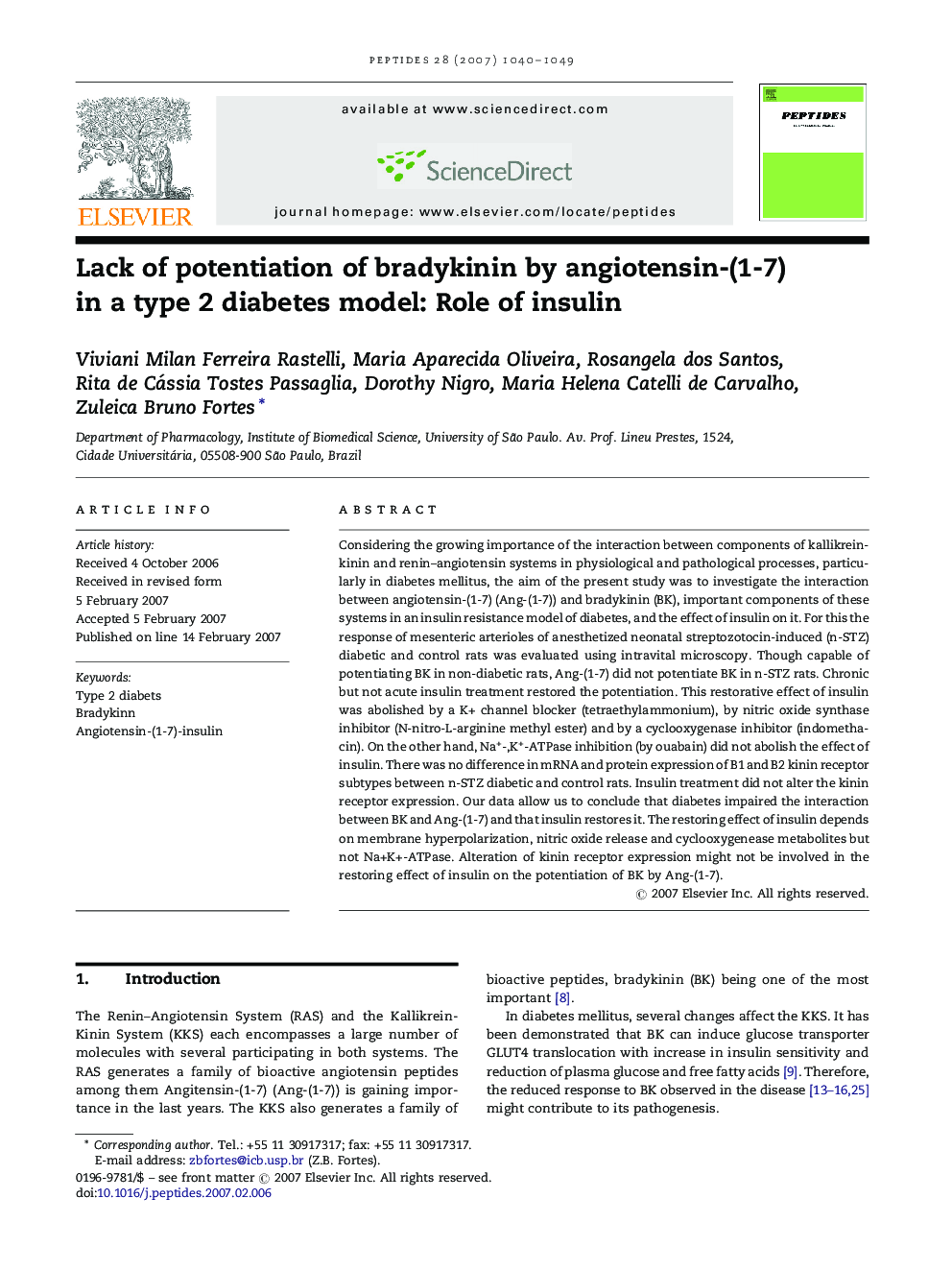| Article ID | Journal | Published Year | Pages | File Type |
|---|---|---|---|---|
| 2007515 | Peptides | 2007 | 10 Pages |
Considering the growing importance of the interaction between components of kallikrein-kinin and renin–angiotensin systems in physiological and pathological processes, particularly in diabetes mellitus, the aim of the present study was to investigate the interaction between angiotensin-(1-7) (Ang-(1-7)) and bradykinin (BK), important components of these systems in an insulin resistance model of diabetes, and the effect of insulin on it. For this the response of mesenteric arterioles of anesthetized neonatal streptozotocin-induced (n-STZ) diabetic and control rats was evaluated using intravital microscopy. Though capable of potentiating BK in non-diabetic rats, Ang-(1-7) did not potentiate BK in n-STZ rats. Chronic but not acute insulin treatment restored the potentiation. This restorative effect of insulin was abolished by a K+ channel blocker (tetraethylammonium), by nitric oxide synthase inhibitor (N-nitro-L-arginine methyl ester) and by a cyclooxygenase inhibitor (indomethacin). On the other hand, Na+-,K+-ATPase inhibition (by ouabain) did not abolish the effect of insulin. There was no difference in mRNA and protein expression of B1 and B2 kinin receptor subtypes between n-STZ diabetic and control rats. Insulin treatment did not alter the kinin receptor expression. Our data allow us to conclude that diabetes impaired the interaction between BK and Ang-(1-7) and that insulin restores it. The restoring effect of insulin depends on membrane hyperpolarization, nitric oxide release and cyclooxygenease metabolites but not Na+K+-ATPase. Alteration of kinin receptor expression might not be involved in the restoring effect of insulin on the potentiation of BK by Ang-(1-7).
